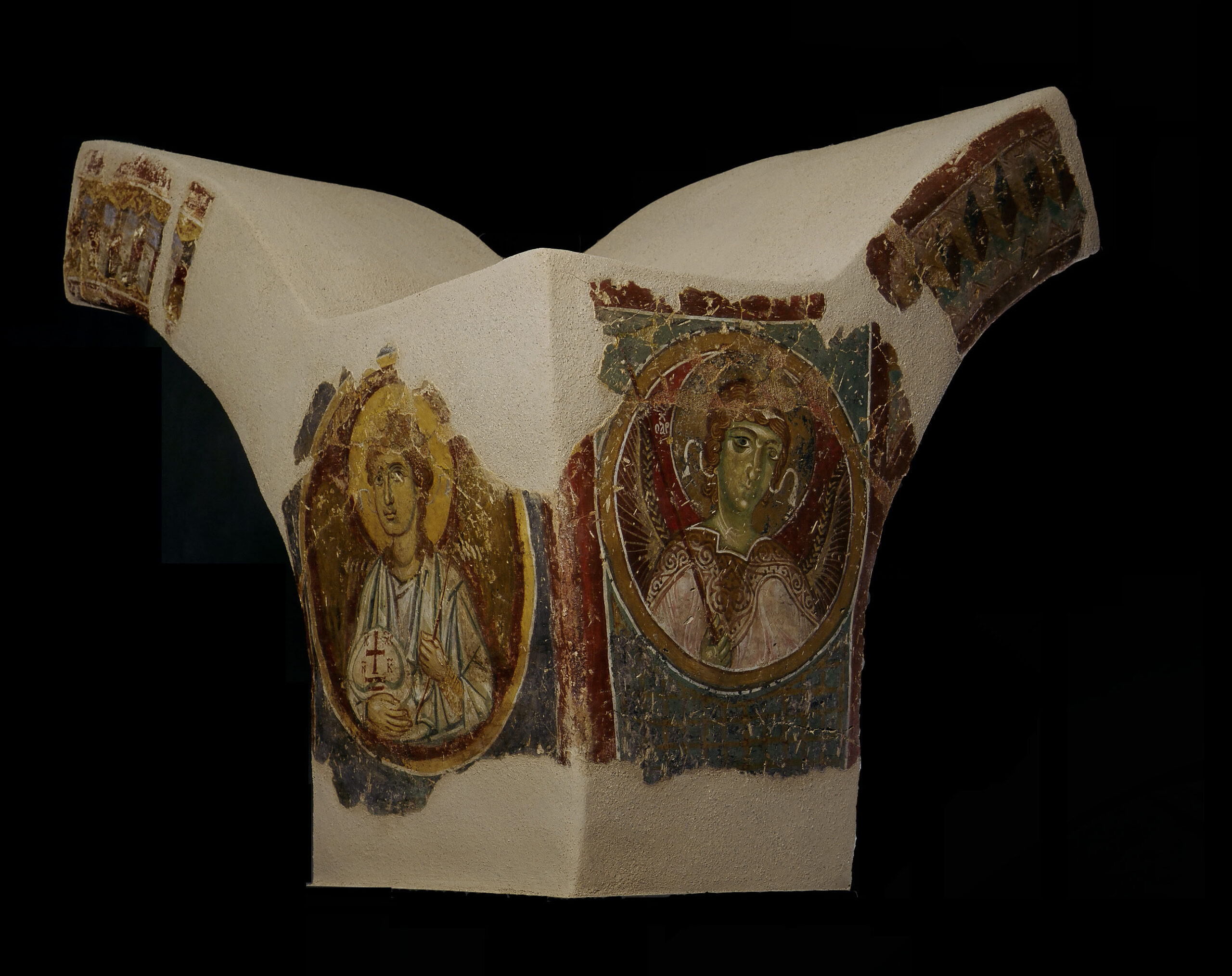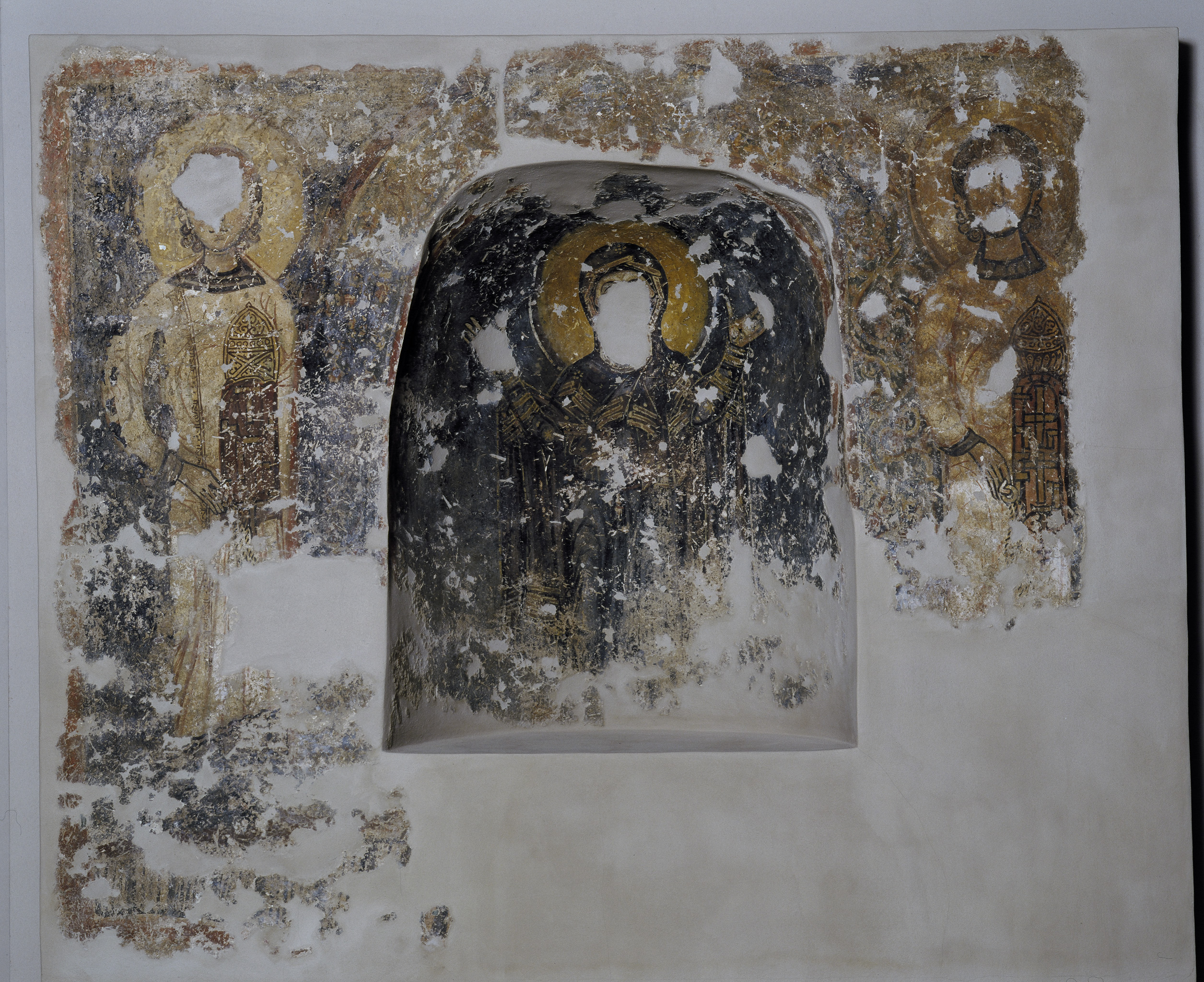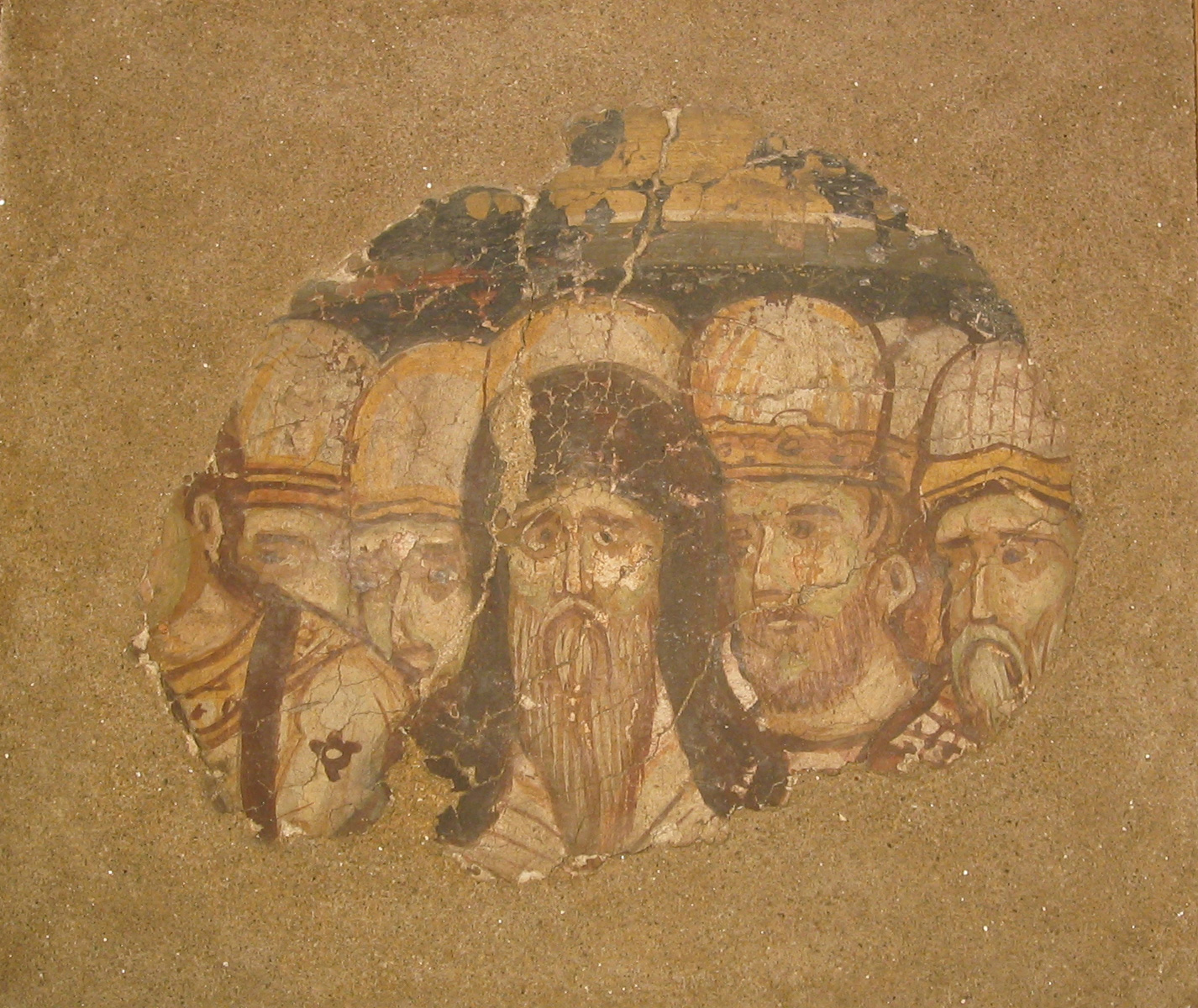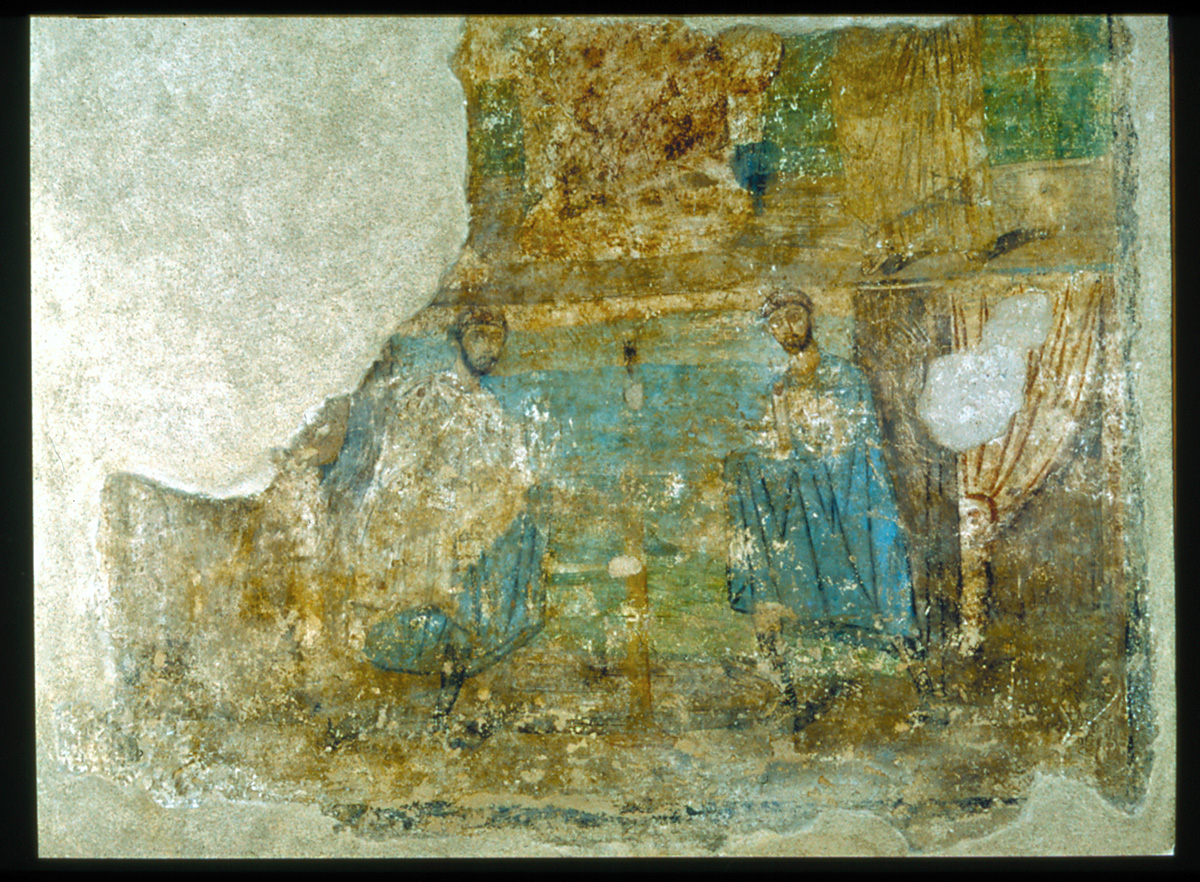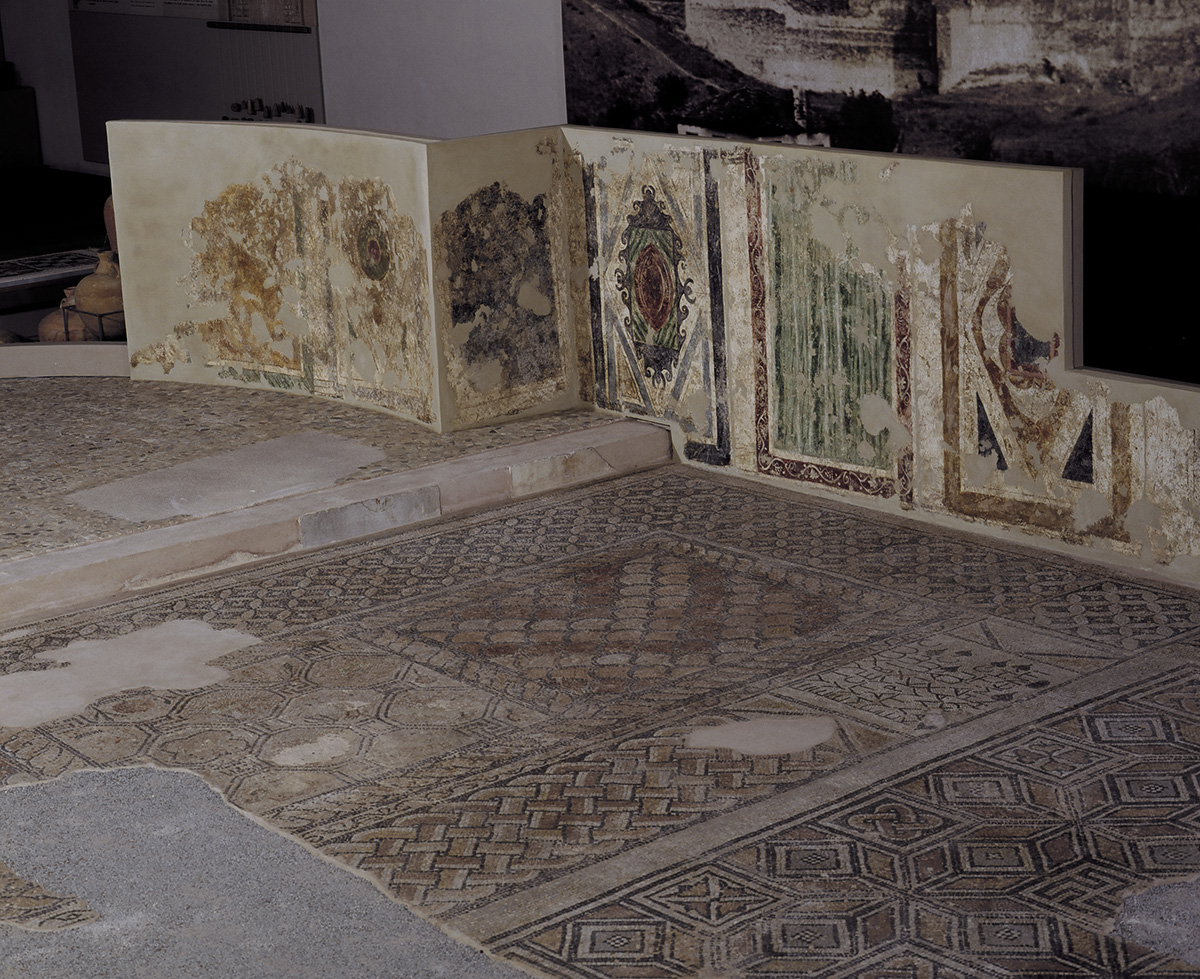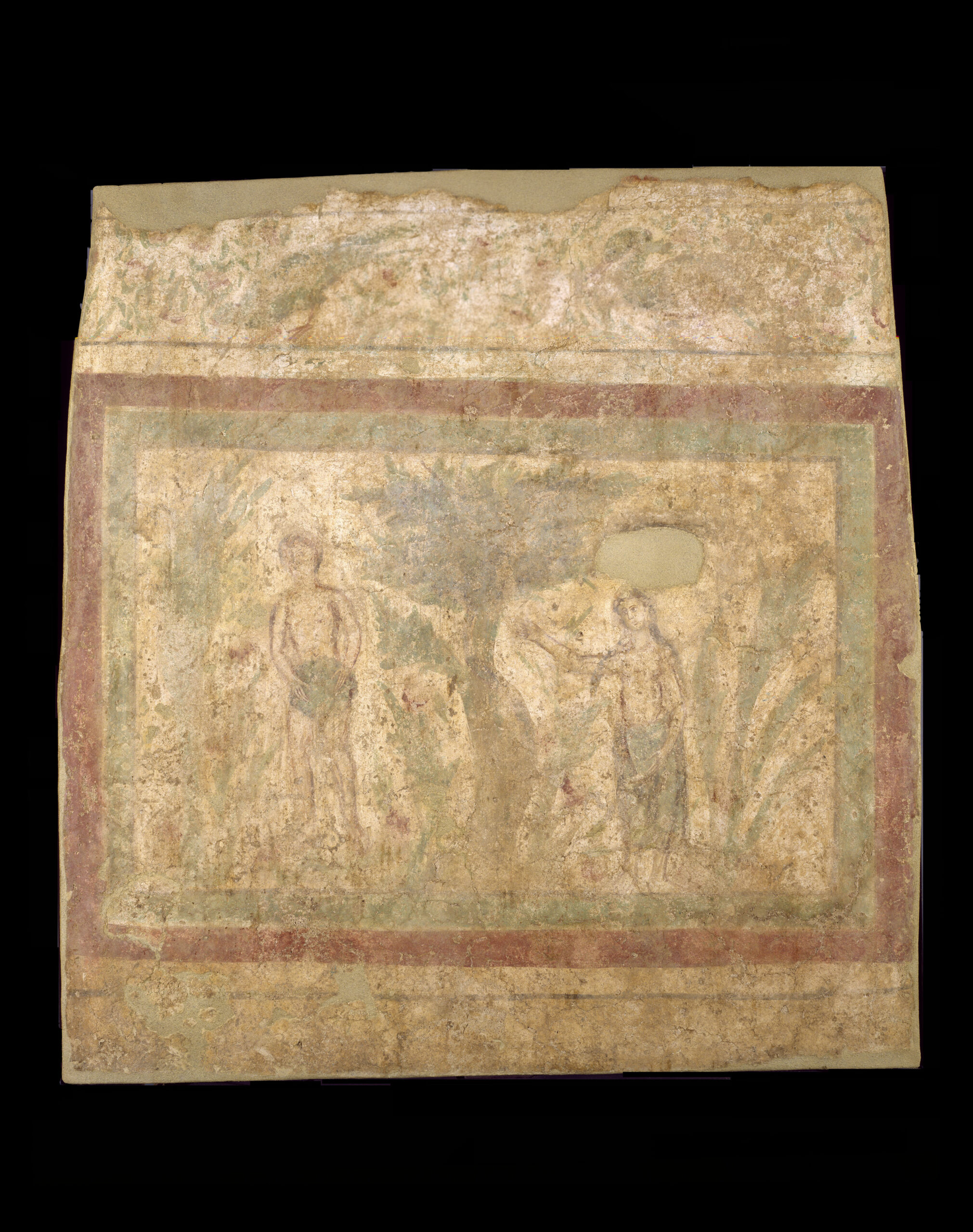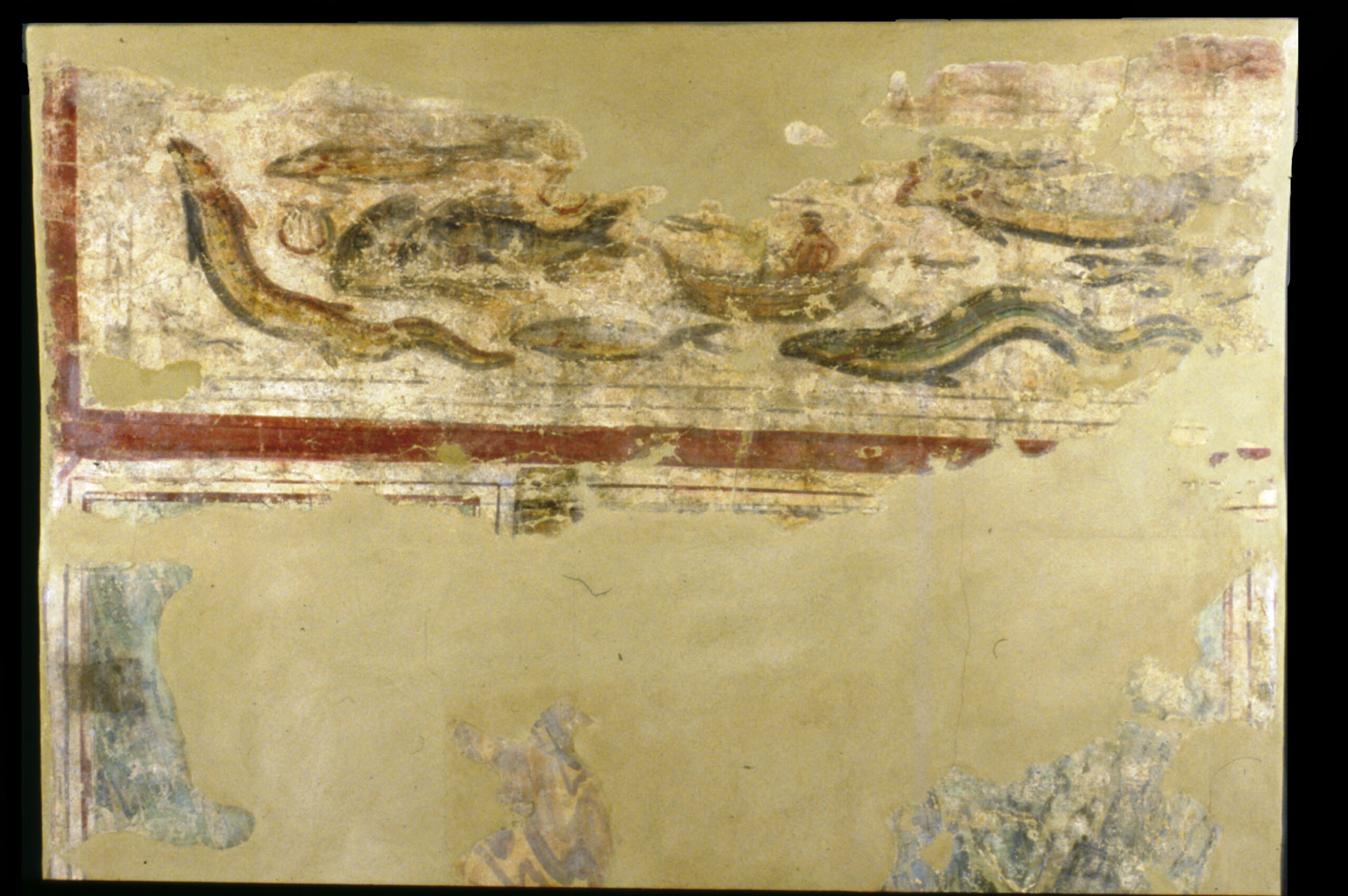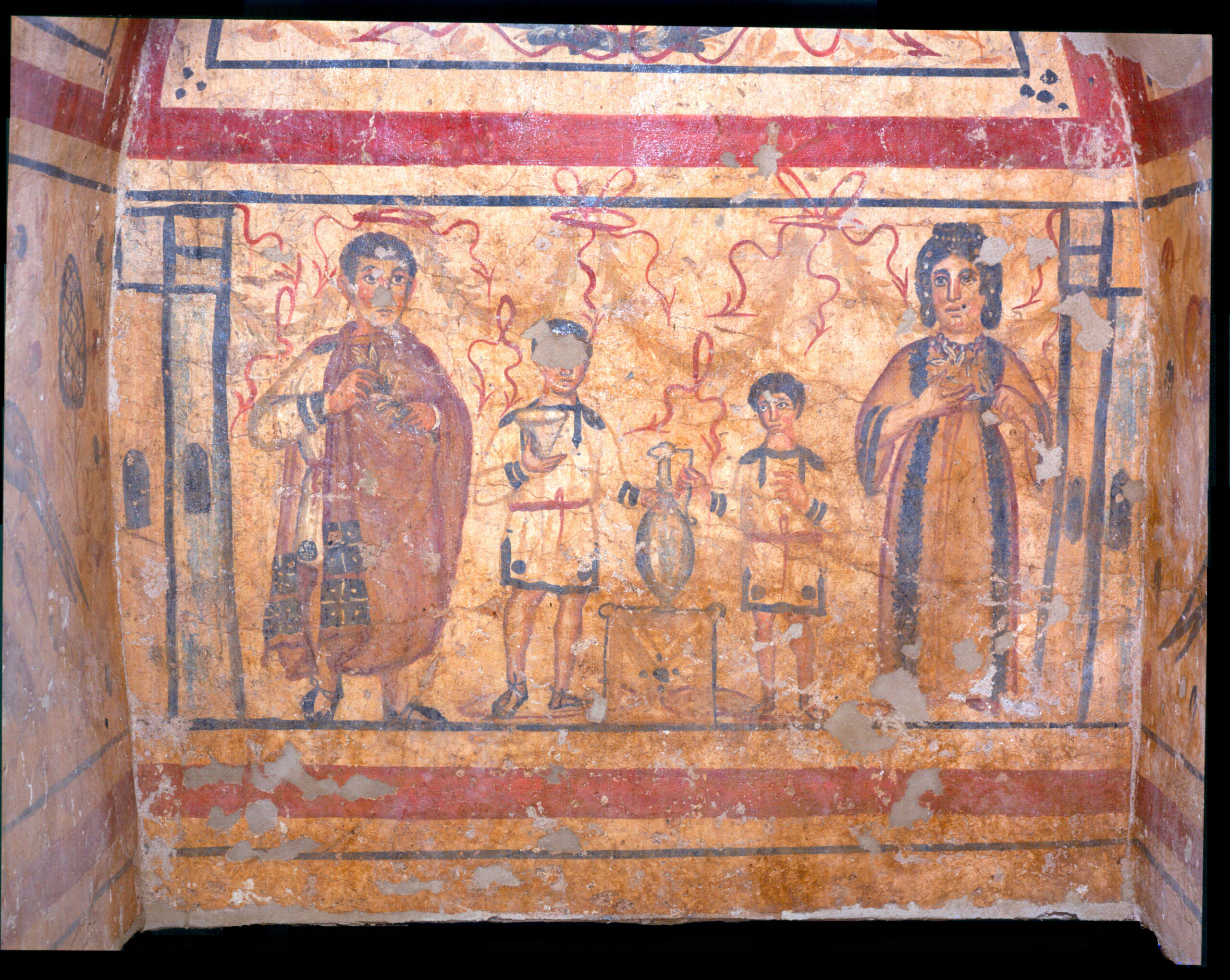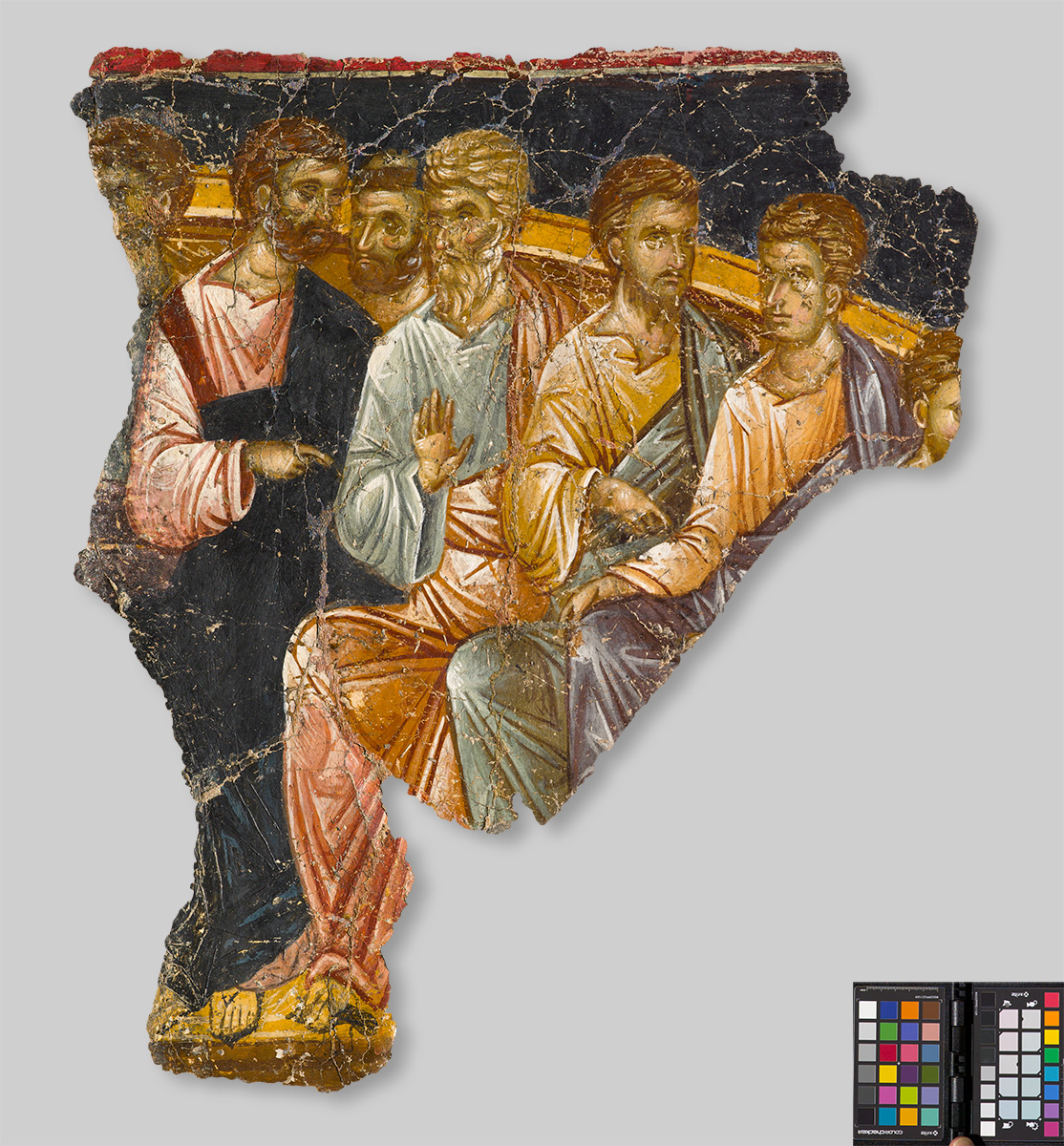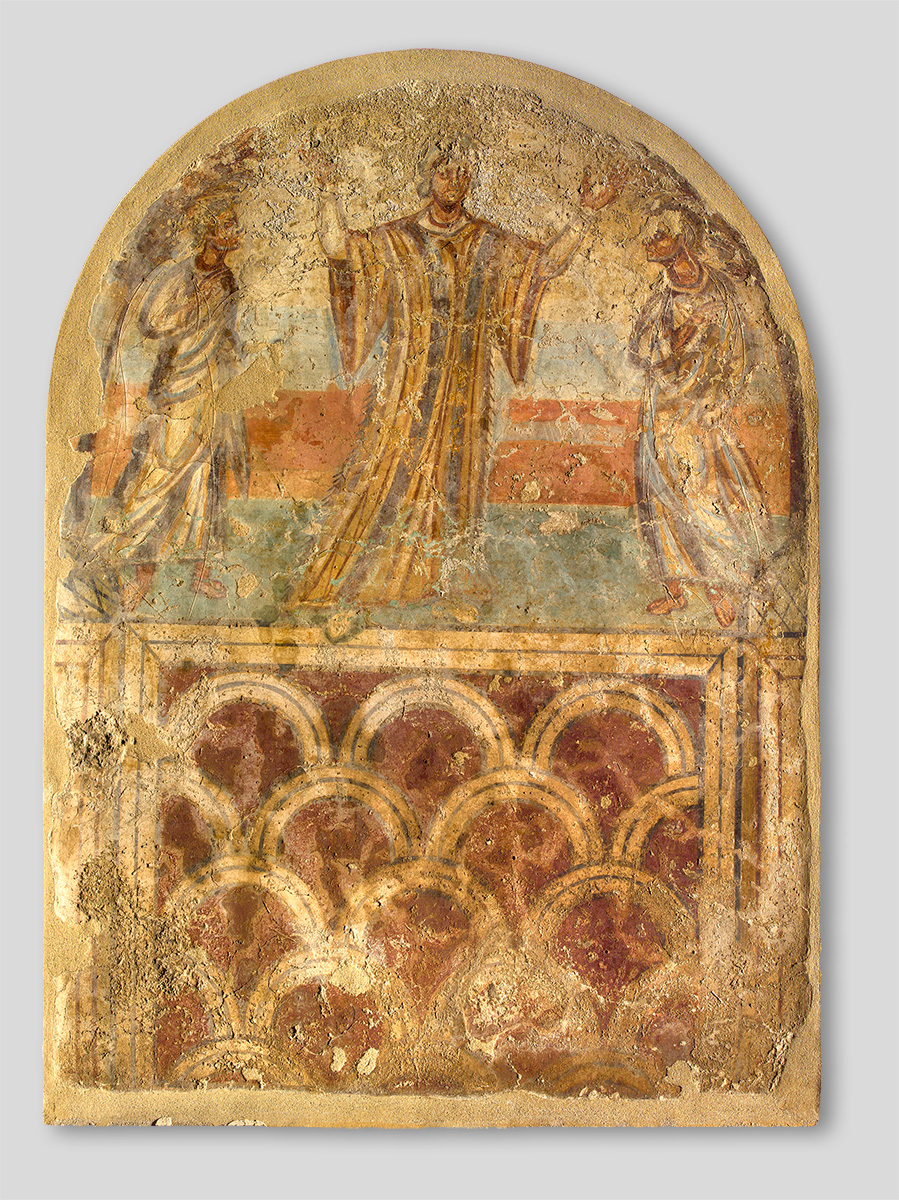Wall Paintings
The wall painting collection includes approximately 200 sets, from the 3rd to the 20th century, the vast majority of which come from the decoration of early Christian tombs in Thessaloniki, whose frescoes were detached in recent years.
The Museum of Byzantine Culture therefore has the richest collection of funerary paintings in Greece and one of the most interesting in the Mediterranean, as it represents trends in painting from the 3rd to the 8th century.
The themes of funerary painting include motifs from the Greco-Roman tradition, such as garlands, wreaths, ribbons, imitations of architectural buildings, but also symbolic themes from the Old and New Testaments, depictions of paradise, scenes of funerary worship, as well as religious symbols of the new religion, such as the cross and the Christogram.
The above themes are usually rendered in four colours: red, black, white, and green which are dissolved in lime water and worked on the prepared surface of lime mortar covering the walls of the tombs.
Unfortunately, very few examples have survived from the secular painting of the Early Christian period (4th-7th century). These are frescoes imitating the panelling that adorned the walls of wealthy homes in Thessaloniki.
The collection includes rare frescoes from the era of the Iconoclasm, the religious and political friction of the 8th-9th century, when art was limited to non-pictorial, symbolic representations, as well as important frescoes from the mid-Byzantine period (9th-12th century) which mainly came from religious buildings.
The style of Palaeologian painting (1258-1453) is represented by the funerary ciborium of the 13th c. from the church of Hagia Sophia and frescoes from the catholicon of the Vlatades monastery.
Fragments of frescoes from post-Byzantine churches in the city and Macedonia in general are also included in the wall painting collection.
The wall paintings of the collection are displayed in galleries 1, 2, 3, 4, 6, 7 & 10 at the permanent exhibition.



